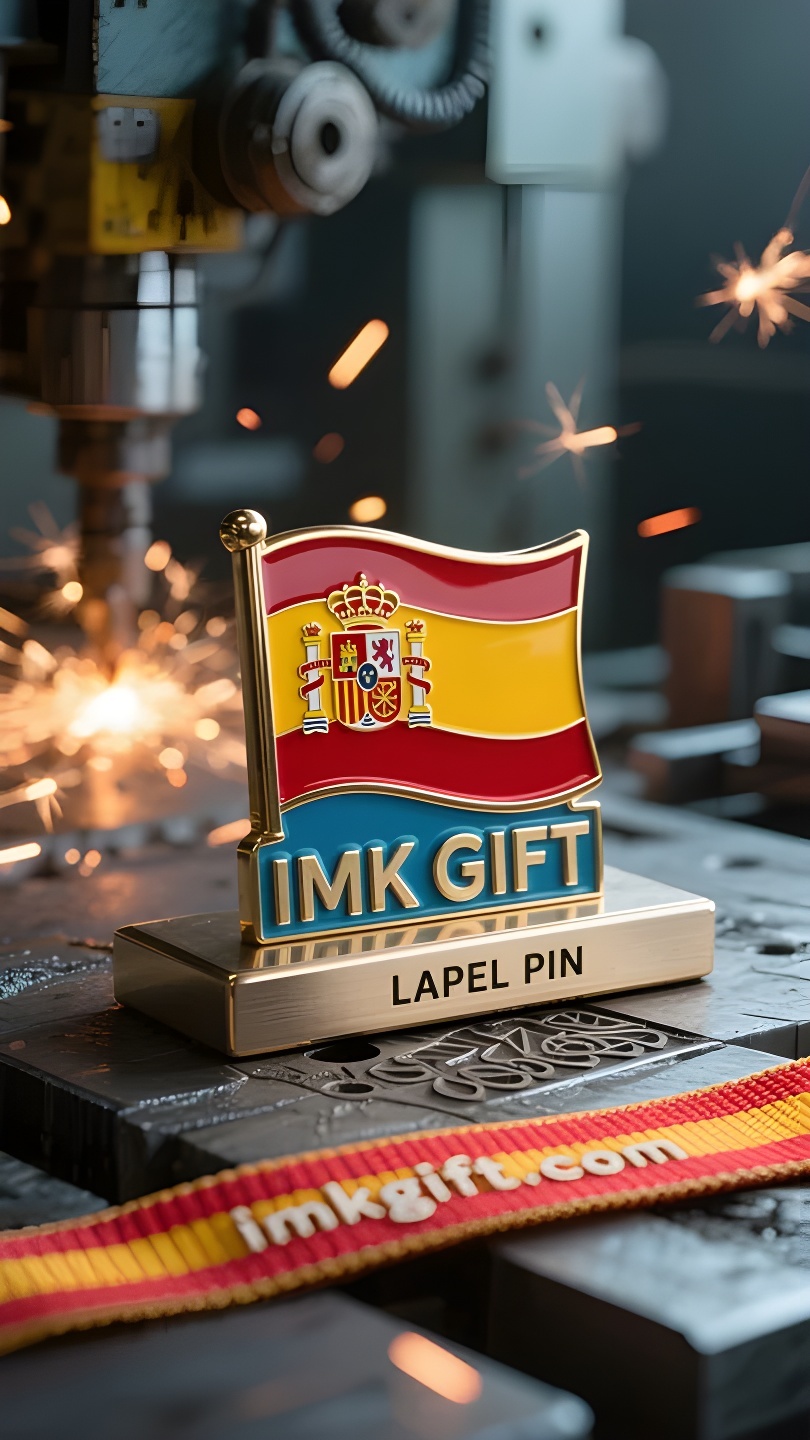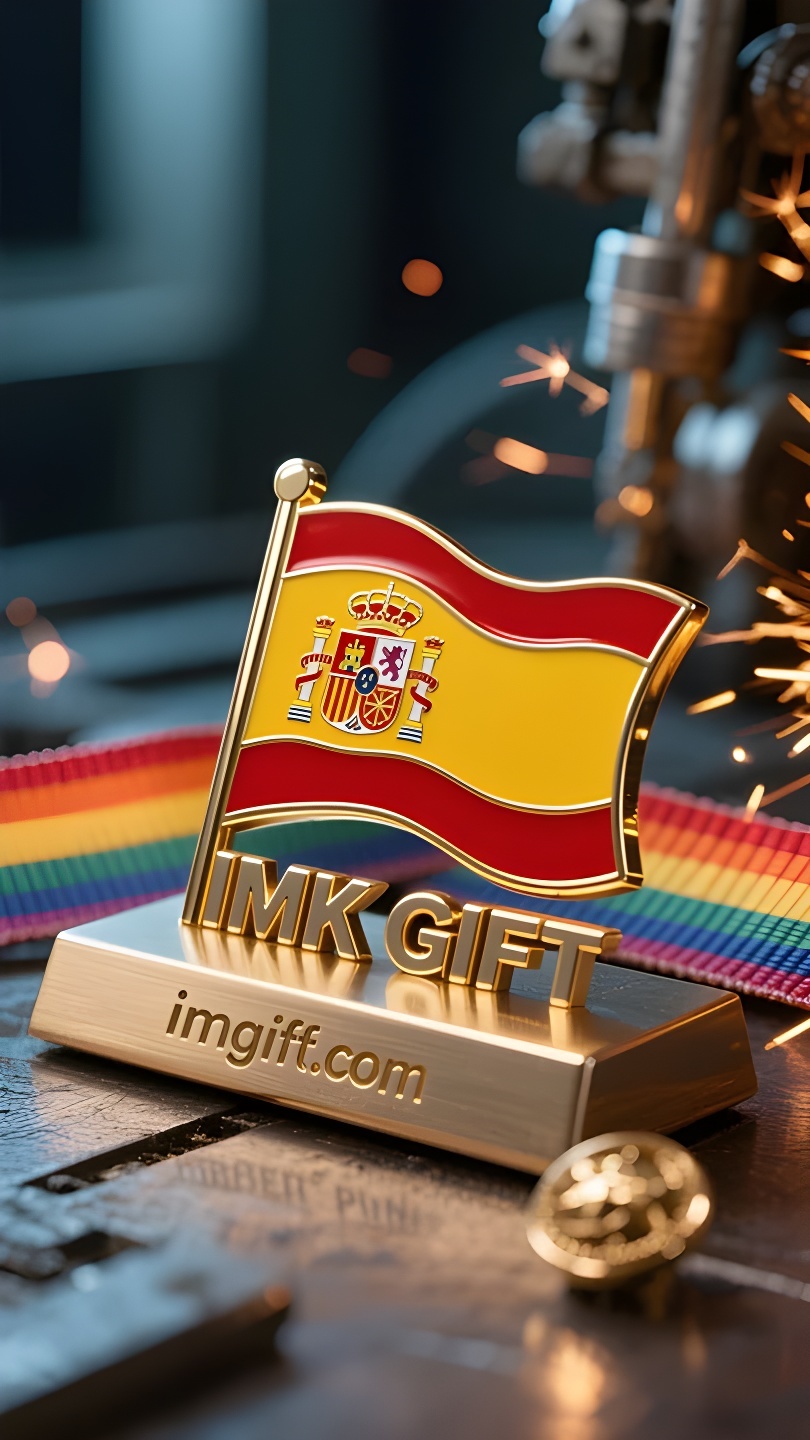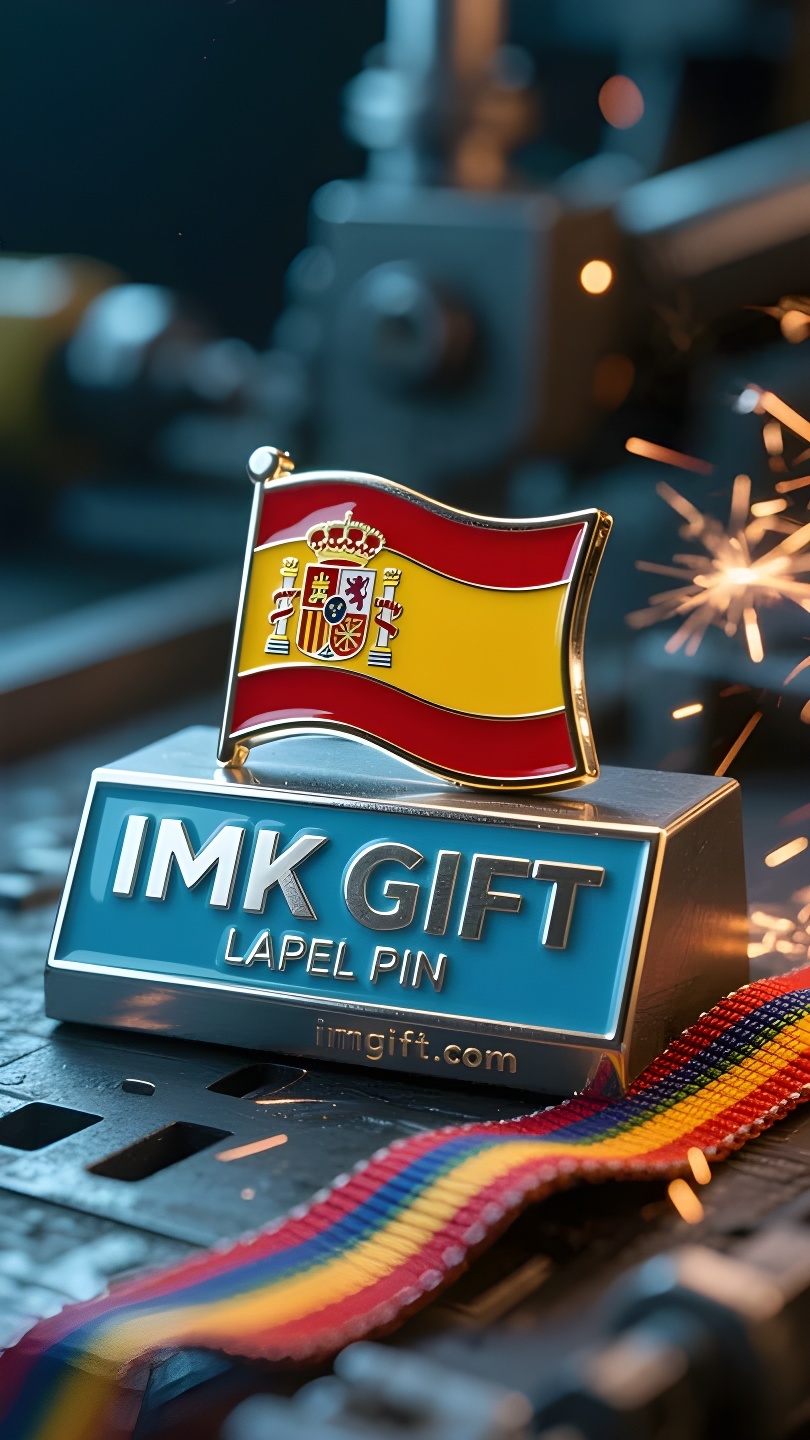in982-Bajo-el-pisapapeles-Las-montañas-y-los-ríos-son-sólidos-para-siempre
▼
Bajo el sol otoñal de octubre en España, las líneas rojas y amarillas de la bandera nacional y el antiguo tótem del emblema nacional custodian el espíritu de esta tierra de otra forma: se transforman en pisapapeles sobre el escritorio, expresando con serenidad la creencia de nunca rendirse. Cada centímetro del tallado del pisapapeles del emblema nacional español es una condensación de historia. El escudo central lleva el escudo de armas de los reinos de Castilla, León, Aragón, etc., como una aleación fundida a partir de innumerables fragmentos, mostrando el poder de la simbiosis multidimensional. Las Columnas de Hércules a ambos lados se yerguen, apuntando directamente al lema “Plus Ultra”, al igual que la inquebrantable persistencia cuando el pisapapeles presiona el papel. Al contemplar esta fe de bronce, parece oír el rugido de la flota de Colón rompiendo las olas y ver la silueta de Cervantes escribiendo con angustia: todas las carreras aparentemente imposibles se hacen realidad gracias a la persistencia. Los colores rojo y amarillo de la bandera nacional ondean sin cesar en el pisapapeles, tan calientes como la sangre de la capa de un torero y tan cálidos como la cosecha de trigo ondeando en el Mediterráneo. Esta gloria que fluye en el borde del pisapapeles recuerda a todos los que escriben su destino: la verdadera estabilidad no reside en evitar la tormenta, sino en el peso propio, como un pisapapeles. Cuando la ola de frío económico invade y cuando surge la corriente subyacente de las diferencias, los españoles siempre pueden extraer sabiduría de las líneas del escudo nacional: las diferencias no son grietas, sino la necesidad de incrustaciones de mosaico; las dificultades no son el final, sino un nuevo viaje guiado por la columna de Hércules. En este momento, este pisapapeles presiona las arrugas de las páginas del tiempo. Su peso proviene de la acumulación de miles de años de civilización, y su calidez proviene del poder de la palma de cada persona común. Cuando las luces de la oficina iluminan los bordes y las esquinas del pisapapeles, cuando los adolescentes en el aula tocan las líneas de relieve, las montañas y las olas de la Península Ibérica crecen en silencio con el sonido de la ruptura del capullo.
Under the autumn sun of October in Spain, the red and yellow lines of the national flag and the ancient totem of the national emblem are guarding the spirit of this land in another form – they are transformed into paperweights on the desk, telling the belief of never giving up in a calm manner. Every inch of the carving of the Spanish national emblem paperweight is a condensation of history. The central shield carries the coat of arms of the kingdoms of Castile, León, Aragon, etc., like an alloy cast from countless fragments, showing the power of multi-dimensional symbiosis. The Pillars of Hercules on both sides stand tall, pointing directly to the motto of “Plus Ultra”, just like the unshakable persistence when the paperweight presses down the paper. When people gaze at this bronze faith, it seems that they can hear the roar of Columbus’s fleet breaking through the waves and see the silhouette of Cervantes writing in distress – all seemingly impossible careers are tempered into reality through persistence. The red and yellow colors of the national flag flow endlessly in the paperweight, as hot as the blood of a bullfighter’s cape, and as warm as the harvest of wheat waves in the Mediterranean. This glory flowing on the edge of the paperweight reminds everyone who writes their destiny: true stability does not lie in avoiding the storm, but in self-weight like a paperweight. When the economic cold wave invades and when the undercurrent of differences surges, the Spanish can always draw wisdom from the lines of the national emblem – differences are not cracks, but the necessity of mosaic inlay; difficulties are not the end, but a new journey guided by the Hercules column. At this moment, this paperweight is pressing down the wrinkles of the pages of the times. Its weight comes from the accumulation of thousands of years of civilization, and its warmth comes from the power of every ordinary person’s palm. When the lights in the office illuminate the edges and corners of the paperweight, when the teenagers in the classroom touch the relief lines, the mountains and waves of the Iberian Peninsula are growing in silence with the sound of breaking out of the cocoon.
在西班牙十月的秋阳下,国旗的红黄纹路与国徽的古老图腾,正以另一种形式守护着这片土地的精神——它们化作书案上的镇纸,以沉静之姿讲述永不言弃的信念。
西班牙国徽镇纸的每一寸雕琢都是历史的凝练。中央的盾牌承载着卡斯蒂利亚、莱昂、阿拉贡等王国的纹章,如同无数碎片熔铸的合金,昭示着多元共生的力量。两侧的海格力斯之柱巍然矗立,直指”Plus Ultra”(超越极限)的箴言,恰如镇纸压住纸张时那份不可撼动的执着。当人们凝视这方铜铸的信仰,仿佛听见哥伦布舰队劈波斩浪的轰鸣,看见塞万提斯在困顿中执笔的剪影——所有看似不可能的事业,都在坚持中淬炼成真。
国旗的红黄双色在镇纸中流转不息,炽烈如斗牛士披风翻卷的热血,温暖如地中海麦浪翻涌的丰收。这抹流淌在镇纸边缘的荣耀,提醒着每个执笔书写命运的人:真正的稳定不在于逃避风暴,而如镇纸般以自重定乾坤。当经济寒潮侵袭、当分歧暗流涌动,西班牙人总能从国徽纹路中汲取智慧——差异不是裂痕,而是马赛克镶嵌的必需;困境不是终点,而是海格力斯柱指引的新航程。
此刻,这方镇纸正压住时代书页的褶皱。它的重量来自千年文明的积淀,它的温度源自每个普通人掌心的力量。当办公室的灯光照亮镇纸的棱角,当教室里的少年触摸浮雕的纹路,伊比利亚半岛的群山与海浪,正在寂静中生长出破茧的声响。
▼
Contact Us
📞 Tel: +0086-760-85286839
📧 Email: sales3@imkgift.com








